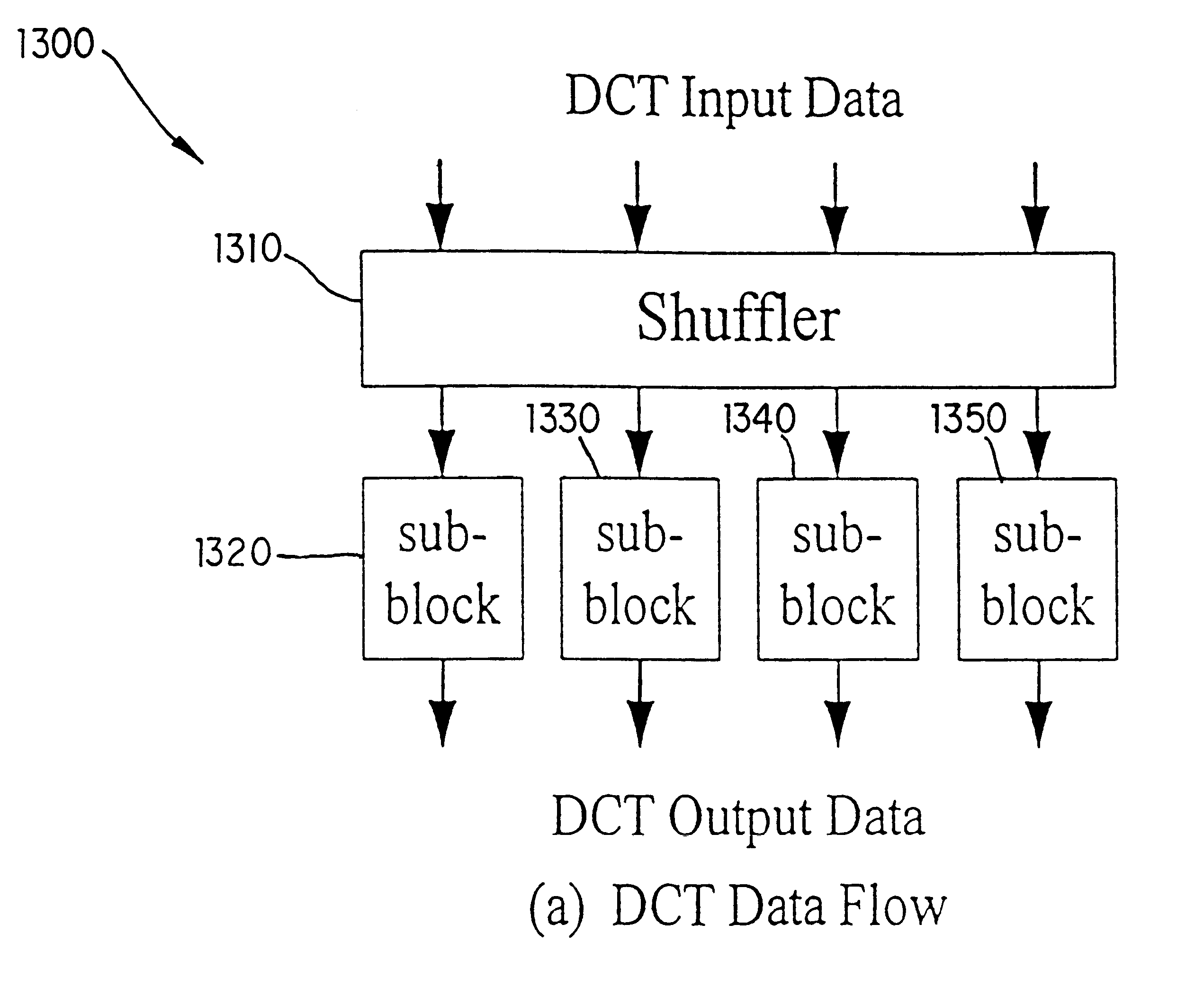Method and system for computing 8x8 DCT/IDCT and a VLSI implementation
a technology of vlsi implementation and 8x8 dct, applied in computing, complex mathematical operations, instruments, etc., can solve the problems of high compression, real-time encoding, and dct not greatly improving decorrelation
- Summary
- Abstract
- Description
- Claims
- Application Information
AI Technical Summary
Problems solved by technology
Method used
Image
Examples
Embodiment Construction
3.0 2-D DCT / IDCT Algorithm
3.1 Introduction
3.2 2-D 8.times.8 DCT Algorithm
3.3 2-D 8.times.8 IDCT Algorithm
3.4 Further Simplification of the 4.times.4 Matrix Multiplications
3.5 Summary
4.0 Finite Wordlength Simulations
4.1 Introduction
4.2 Coefficient Quantization Error Effects
4.2.1 2-D DCT Simulation Results
4.2.2 2-D IDCT Simulation Results
4.3 Truncation Error Effects
4.3.1 2-D DCT Simulation Results
4.3.2 2-D IDCT Simulation Results
4.4 Combined Quantization and Truncation Error Effects
4.5 Comparison with Row-Column Method
4.6 Summary
5.0 Hardware Architecture Design
5.1 Introduction
5.2 Shuffler--Addition / Subtraction Shuffling Device
5.3 Sub-block Operator--4.times.4 Matrix Multiplications Unit
5.4 Auxiliary Components for 2-D DCT or IDCT Implementations
5.5 Architectures for DCT, IDCT and Combined DCT / IDCT
5.6 Summary
6.0 HDL Design and Synthesis for an Example 2-D DCT / IDCT Algorithm
6.1 Introduction
6.2 HDL Design for Shuffler
6.2.1 HDL Design for Sub-block Operators
6.2.2 HDL Design for Auxiliary ...
PUM
 Login to View More
Login to View More Abstract
Description
Claims
Application Information
 Login to View More
Login to View More - R&D
- Intellectual Property
- Life Sciences
- Materials
- Tech Scout
- Unparalleled Data Quality
- Higher Quality Content
- 60% Fewer Hallucinations
Browse by: Latest US Patents, China's latest patents, Technical Efficacy Thesaurus, Application Domain, Technology Topic, Popular Technical Reports.
© 2025 PatSnap. All rights reserved.Legal|Privacy policy|Modern Slavery Act Transparency Statement|Sitemap|About US| Contact US: help@patsnap.com



